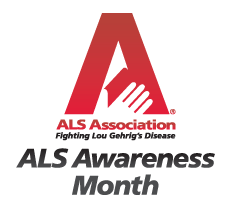Tag Archives: lifts
Multiple Sclerosis
Multiple Sclerosis can affect individuals in varying ways including tingling, numbness, slurred speech, blurred or double vision, muscle weakness, poor coordination, unusual fatigue, muscle cramps, bowel and bladder problems and paralysis. Due to these symptoms, special equipment or accommodations may need to be made to aid a person in safely maintaining their mobility independence for as long as possible.
Physical Considerations: The following are considerations for selecting a vehicle:
Driving a sedan: The Individual must be able to do the following:
- Open and close the Door
- Transfer in and out of the vehicle
- A wheelchair/scooter must be able to be stored and retrieved. Special equipment is available to aid with storage.
Driving a Van: Options may include a mini-van with a lowered floor and a ramp or a full size van with a lift. Specialized modifications allow a person to transfer to the driver’s seat or drive from a wheelchair. Technology may be able to compensate for the loss of strength or range of motion such as:
- Reduced effort steering and/or brake systems to compensate for reduced strength.
- Mechanical hand controls allow for operation of the gas and brake using upper extremities.
- Servo brake/ accelerator systems compensate for reduced strength/range of motion of arms.
- If spasticity is difficult to manage, it may lead to an inability to drive.
Visual Changes:
- May be severe enough that driving is precluded or night driving is prohibited.
- If double vision is intermittent and can be monitored independently, then driving may be limited to avoid driving during an exacerbation.
- Sunglasses may help with glare sensitivity.
- Compensate for loss of peripheral vision with special mirrors and head turning.
- Learn order of traffic signals to aid with color vision impairment.
Cognitive Issues:
- Need to regulate emotions and avoid driving when upset, angry or overly emotional.
- May be limited to familiar routes if some loss of memory or problem solving but still enough judgment to drive.
Decreased Energy:
- Energy conservation is vital.
- May require assistance with wheelchair loading to save energy for driving.
- Air conditioning aids with managing warm climates.
Medications:
- Seek the physician’s input regarding side effects which may impair driving.
- Monitor when medications are taken. Don’t drive when sleepy or just before or after medicating
If you or those that drive with you notice any of the above warning signs and need a driving evaluation, give us a call at 508-697-6006 and we can, help you with with knowledge about medical conditions, and help with a comprehensive evaluation and determine your ability to drive.
- Visual Perception
- Functional Ability
- Reaction Time
- Behind-the-wheel evaluation
Spina Bifida
Spina Bifida is a congenital defect in which part of one or more vertebrae (the bone structure that surrounds the spinal column), fail, to develop completely, leaving part of the spinal cord exposed. It can occur anywhere on the spine but is most common in the lower back. The severity of the condition depends on how much nerve tissue is exposed. Frequently special adaptations on a vehicle are necessary for independent driving. The person with spina bifida may also have impairments in the ~areas of vision, perception (how the brain interprets what the eyes see) or learning. Adaptive driving equipment is frequently used for physical problems. A spinner knob and hand controls can be used if a person is unable to use either foot for gas or brake. Specialized modifications can also allow a person to transfer to the driver’s seat or drive from the wheelchair in a van or minivan.
Common factors that can affect safe driving:
- Limited range of motion and strength
- Difficulty with coordinated movements
- Visual impairments (poor acuity)
- Trouble visually scanning or tracking quickly
- Learning difficulties
- Impaired judgment in complex situations
- Slow processing and reaction time
A driver rehabilitation evaluation will examine the strengths and weaknesses of each individual as related to the driving task. The goal is independent, safe driving. No modifications or vehicle selection should be made until the person has completed a driver evaluation.
If you or those that drive with you notice any of the above warning signs and need a driving evaluation, give us a call at 508-697-6006 and we can, help you with with knowledge about medical conditions, and help with a comprehensive evaluation and determine your ability to drive.
- Visual Perception
- Functional Ability
- Reaction Time
- Behind-the-wheel evaluation
Spinal Cord Injury
Driving a sedan: When considering the use of a sedan, the individual must be able to do the following:
- Lock and Unlock the door
- Open and close the door
- Transfer to and from the wheelchair
- Store and retrieve the wheelchair (either independently or with a wheelchair loading device)
- Since characteristics and dimensions of vehicles vary, it is important that the individual performs these functions in the vehicle being considered prior to purchase. A driver rehabilitation specialist can provide recommendations for sedan selection.
There are several levels of driving control technology to compensate for the loss of strength and/or range of motion. Some of these include:
- Reduced effort steering systems to compensate for reduced strength
- Servo brake and accelerator control to compensate for reduced range of motion and strength.
- Servo driving systems, allowing one hand operation of brake, accelerator and steering.
- Adaptive equipment and vehicle modifications for wheelchair access are available for some full-size and mini vans; however, all vans are not suitable for modifications. We can assist in making the correct van choice and can provide a comprehensive evaluation to determine a persons ability to drive.
- Visual Perception
- Functional Ability
- Reaction Time
- Behind-the-wheel evaluation
May Is ALS Awareness Month : Speak Up Now To Give Hope

ALS, also known as Lou Gehrig’s Disease, is 100% fatal and has few treatments to improve the quality of life. We are committed to helping more people understand the impact that this devastating disease has on individuals and families nationwide. During ALS Awareness Month, we ask that you join us: speak up now to give hope.
Tell Your Story · Sign up · Advocate

What is ALS?
Amyotrophic lateral sclerosis (ALS), often referred to as “Lou Gehrig’s Disease,” is a progressive neurodegenerative disease that affects nerve cells in the brain and the spinal cord. Motor neurons reach from the brain to the spinal cord and from the spinal cord to the muscles throughout the body. The progressive degeneration of the motor neurons in ALS eventually leads to their death. When the motor neurons die, the ability of the brain to initiate and control muscle movement is lost. With voluntary muscle action progressively affected, patients in the later stages of the disease may become totally paralyzed.A-myo-trophic comes from the Greek language. “A” means no or negative. “Myo” refers to muscle, and “Trophic” means nourishment–”No muscle nourishment.” When a muscle has no nourishment, it “atrophies” or wastes away. “Lateral” identifies the areas in a person’s spinal cord where portions of the nerve cells that signal and control the muscles are located. As this area degenerates it leads to scarring or hardening (“sclerosis”) in the region.
As motor neurons degenerate, they can no longer send impulses to the muscle fibers that normally result in muscle movement. Early symptoms of ALS often include increasing muscle weakness, especially involving the arms and legs, speech, swallowing or breathing. When muscles no longer receive the messages from the motor neurons that they require to function, the muscles begin to atrophy (become smaller). Limbs begin to look “thinner” as muscle tissue atrophies.
Forms of ALS
Three classifications of ALS have been described:
- Sporadic: The most common form of ALS in the United States – 90 to 95% of all cases.
- Familial: Occurring more than once in a family lineage (genetic dominant inheritance) accounts for a very small number of cases in the United States – 5 to 10% of all cases.
- Guamanian: An extremely high incidence of ALS was observed in Guam and the Trust Territories of the Pacific in the 1950’s.
The most common form of ALS in the United States is “sporadic” ALS. It may affect anyone, anywhere. “Familial” ALS (FALS) means the disease is inherited. Only about 5 to 10% of all ALS patients appear to have genetic or inherited form of ALS. In those families, there is a 50% chance each offspring will inherit the gene mutation and may develop the disease.
Who Gets ALS?
ALS is a disorder that affects the function of nerves and muscles. Based on U.S. population studies, a little over 5,600 people in the U.S. are diagnosed with ALS each year. (That’s 15 new cases a day.) It is estimated that as many as 30,000 Americans have the disease at any given time. According to the ALS CARE Database, 60% of the people with ALS in the Database are men and 93% of patients in the Database are Caucasian.
Most people who develop ALS are between the ages of 40 and 70, with an average age of 55 at the time of diagnosis. However, cases of the disease do occur in persons in their twenties and thirties. Generally though, ALS occurs in greater percentages as men and women grow older. ALS is 20% more common in men than in women. However with increasing age, the incidence of ALS is more equal between men and women.
There are several research studies – past and present – investigating possible risk factors that may be associated with ALS. More work is needed to conclusively determine what genetics and/or environment factors contribute to developing ALS. It is known, however, that military veterans, particularly those deployed during the Gulf War, are approximately twice as likely to develop ALS.
Half of all people affected with ALS live at least three or more years after diagnosis. Twenty percent live five years or more; up to ten percent will live more than ten years.
There is some evidence that people with ALS are living longer, at least partially due to clinical management interventions, riluzole and possibly other compounds and drugs under investigation.
Diagnosing ALS
ALS is a very difficult disease to diagnose. To date, there is no one test or procedure to ultimately establish the diagnosis of ALS. It is through a clinical examination and series of diagnostic tests, often ruling out other diseases that mimic ALS, that a diagnosis can be established. A comprehensive diagnostic workup includes most, if not all, of the following procedures:
- electrodiagnostic tests including electomyography (EMG) and nerve conduction velocity (NCV)
- blood and urine studies including high resolution serum protein electrophoresis, thyroid and parathyroid hormone levels and 24-hour urine collection for heavy metals
- spinal tap
- x-rays, including magnetic resonance imaging (MRI)
- myelogram of cervical spine
- muscle and/or nerve biopsy
- thorough neurological examination
For more information on the importance of a second opinion, click here.
These tests are done at the discretion of the physician, usually based on the results of other diagnostic tests and the physical examination. There are several diseases that have some of the same symptoms as ALS and most of these conditions are treatable. It is for this reason that The ALS Association recommends that a person diagnosed with ALS seek a second opinion from an ALS “expert” – someone who diagnoses and treats many ALS patients and has training in this medial specialty. The ALS Association maintains a list of recognized experts in the field of ALS. See ALS Association Certified Centers of ExcellenceSM, ALS Clinics and contact your local ALS Association Chapter or the National Office.
Symptoms
Initial Symptoms of the Disease
At the onset of ALS the symptoms may be so slight that they are frequently overlooked. With regard to the appearance of symptoms and the progression of the illness, the course of the disease may include the following:
- muscle weakness in one or more of the following: hands, arms, legs or the muscles of speech, swallowing or breathing
- twitching (fasciculation) and cramping of muscles, especially those in the hands and feet
- impairment of the use of the arms and legs
- “thick speech” and difficulty in projecting the voice
- in more advanced stages, shortness of breath, difficulty in breathing and swallowing
The initial symptoms of ALS can be quite varied in different people. One person may experience tripping over carpet edges, another person may have trouble lifting and a third person’s early symptom may be slurred speech. The rate at which ALS progresses can be quite variable from one person to another. Although the mean survival time with ALS is three to five years, many people live five, ten or more years. In a small number of people, ALS is known to remit or halt its progression, though there is no scientific understanding as to how and why this happens. Symptoms can begin in the muscles of speech, swallowing or in the hands, arms, legs or feet. Not all people with ALS experience the same symptoms or the same sequences or patterns of progression. But, progressive muscle weakness and paralysis are universally experienced.
Muscle weakness is a hallmark initial sign in ALS, occurring in approximately 60% of patients. Early symptoms vary with each individual, but usually include tripping, dropping things, abnormal fatigue of the arms and/or legs, slurred speech, muscle cramps and twitches and/or uncontrollable periods of laughing or crying.
The hands and feet may be affected first, causing difficulty in lifting, walking or using the hands for the activities of daily living such as dressing, washing and buttoning clothes.
As the weakening and paralysis continue to spread to the muscles of the trunk of the body the disease, eventually affects speech, swallowing, chewing and breathing. When the breathing muscles become affected, ultimately, the patient will need permanent ventilatory support in order to survive.
Since ALS attacks only motor neurons, the sense of sight, touch, hearing, taste and smell are not affected. For many people, muscles of the eyes and bladder are generally not affected.
Facts You Should Know
- ALS is not contagious.
- It is estimated that ALS is responsible for nearly two deaths per hundred thousand population annually.
- Approximately 5,600 people in the U.S. are diagnosed with ALS each year. The incidence of ALS is two per 100,000 people, and it is estimated that as many as 30,000 Americans may have the disease at any given time.
- Although the life expectancy of an ALS patient averages about two to five years from the time of diagnosis, this disease is variable and many people live with quality for five years and more. More than half of all patients live more than three years after diagnosis.
- About twenty percent of people with ALS live five years or more and up to ten percent will survive more than ten years and five percent will live 20 years. There are people in whom ALS has stopped progressing and a small number of people in whom the symptoms of ALS reversed.
- ALS occurs throughout the world with no racial, ethnic or socioeconomic boundaries.
- ALS can strike anyone.
- The onset of ALS is insidious with muscle weakness or stiffness as early symptoms. Progression of weakness, wasting and paralysis of the muscles of the limbs and trunk as well as those that control vital functions such as speech, swallowing and later breathing generally follows.
- There can be significant costs for medical care, equipment and home health caregiving later in the disease. It is important to be knowledgeable about your health plan coverage and other programs for which your may be eligible, including SSA, Medicare, Medical and Veteran Affairs benefits.
- Riluzole, the first treatment to alter the course of ALS, was approved by the FDA in late 1995. This antiglutamate drug was shown scientifically to prolong the life of persons with ALS by at least a few months. More recent studies suggest Riluzole slows the progress of ALS, allowing the patient more time in the higher functioning states when their function is less affected by ALS. Click here for more information on the drug. Many private health plans cover the cost of Riluzole. Further information on Riluzole coverage through Medicare Prescription Drug Benefit can be found in the Advocacy pages of this website.
Reports from three separate patient databases described long range experience with Riluzole. All three reports suggest a trend of increasing survival with Riluzole over time. More studies that are double blind and controlled are needed to confirm these database observations. The trend appears to indicate that longer periods of time than those used in the Riluzole clinical trials may be needed to see the long-term survival advantage of the drug. An interesting observation was that despite the fact that the Irish government provides Riluzole free of charge to people in Ireland with ALS, only two-thirds of the patients registered in the Ireland national ALS database reported taking Riluzole.

